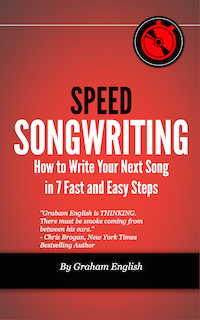
So you’re sitting there, staring at a blank page. The guitar’s ready, fingers itching to strum, but the lyrics just won’t come.
If you’ve ever been stuck in this frustrating start, you’re not alone—and it’s actually a solvable problem. Every song starts somewhere, and getting that initial idea down can be simple with the right framework.
Here’s a breakdown of three clear, actionable steps to get you started and generate your first lyric or melody. By following these steps, you’ll break the ice, conquer the blank page, and find your way to that first line or riff. Let’s get you unstuck.
1. Start with a Strong Visual or Feeling
The most captivating songs draw listeners in by creating an image they can see or a feeling they can almost touch.
To start strong, think of a vivid scene or emotion that holds some energy for you—anything from “a single candle flickering in the dark” to “the ache of saying goodbye at the train station.” This image or feeling doesn’t need to tell the whole story. It’s just a starting point, a spark.
Picture yourself holding this image or feeling up to a spotlight, examining it. Ask yourself, what colors, sounds, or even tastes come to mind? If it’s that candle, maybe you think of the smell of melting wax or the low hum of a quiet room. Write down any small details that come up. Take one of those details and turn it into a single line: “The candle flickers, but the silence weighs more.” This line may evolve, but now you have something tangible on the page.
2. Use the "What If" Game to Build Context
Once you have that first image or feeling, ask, “What if?” It’s one of the most underrated tools for a songwriter. Think about how it might change or deepen. For instance, “What if the candle is the last light in a room filled with old memories?” Or “What if that goodbye at the train station were the last time they’d ever see each other?”
This step is where the song’s story or emotional arc can start to take shape, adding a hint of drama or context to your initial spark. If you’re working with a melody instead of lyrics, try humming or playing with a progression that matches the intensity of your “what if.” Maybe the candle scene feels quiet and slow, so you’d start with a slow, minor key progression. The train station might have more tension, so you lean toward a faster tempo with a heartbeat-like rhythm.
Writing the first few lines that come from this can give you a basic “plot” or emotional skeleton to work from, even if you revise it later.
3. Define Your Big Idea in 1 Sentence
This step might sound simple, but it’s crucial. Try to boil down the core of your song to a single sentence: the “big idea” that gives it direction. This isn’t necessarily your hook or title (though it could be) but rather the heart of what you’re trying to say. Think of it as the North Star that will guide the rest of your songwriting process.
If you started with a candle as a symbol of resilience in dark times, your sentence might be, “Even in loneliness, there’s still a glimmer of hope.” For the train station goodbye, it could be, “Loving someone means knowing when to let go.” The point here is to capture the essence of your song, something you can keep coming back to as you write to ensure you stay on track.
This big idea sentence doesn’t have to be clever; it just has to be real. Write it down at the top of your page and keep it visible. Every line or riff you create from here on should somehow echo this idea. If a line or note doesn’t feel like it fits, this big idea helps you identify it right away.
Putting It All Together: Create Your First Lyric
Now that you have a solid image, a “what if” scenario, and your big idea, you can start shaping these elements into a cohesive lyric. Using the candle example, you could expand with lines like:
“The candle flickers, but the silence weighs more,
A lonely light in a room of closed doors.”
Now you have an anchor: the image of a flickering candle, the context of a quiet room, and a sense of loneliness. This first lyric doesn’t have to be perfect, but it’s powerful. You’re saying something specific, something concrete, and that makes it real.
Keep the Momentum Going
Once you’ve broken the blank page, it’s crucial to keep that momentum going.
A single verse or line is often enough to open the door to more ideas. As you continue, keep your big idea in sight and your visuals sharp. You’ll find that by building layer by layer, you create a natural flow that makes writing the next line feel less daunting.
So go ahead—grab that instrument, hit record, and start writing down whatever comes to mind. By focusing on strong visuals, asking “What if,” and defining your big idea, you’ll have what you need to bring any blank page to life.

Enter your first name and email address below and click “GET ACCESS NOW!” to get the Speed Songwriting Cheat Sheet delivered to your inbox!
We guarantee 100% privacy. Your information will not be shared.

Leave a Reply